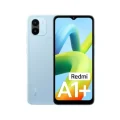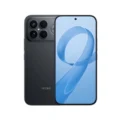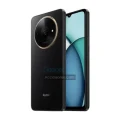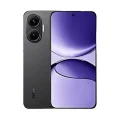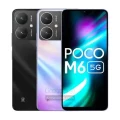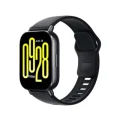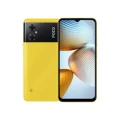Xiaomi Redmi Pad Pro
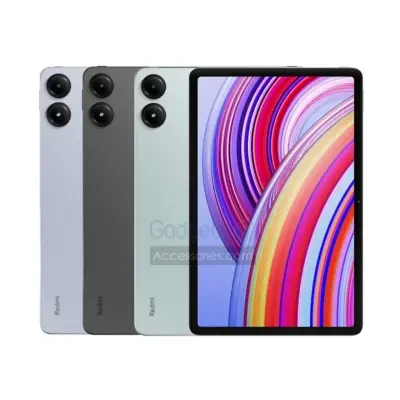
Xiaomi Redmi Pad Pro - Specifications
General
| Device Type | Tablet |
| Model | N/A |
| Announced | 10 April, 2024 |
| Release Date | 15 April, 2024 |
| Estimated Price | $200 to $300 |
Network
| 2G Network | N/A |
| 3G Network | N/A |
| 4G Network | N/A |
| 5G Network | N/A |
| SIM SIM (Subscriber Identity Module) is a small card that contains mobile network subscriber's account information. This allows the phone using the card to attach to a mobile network. The SIM card is most commonly associated with GSM and UMTS mobile networks. Moving a SIM card from one phone to another allows a subscriber to switch mobile phones without having to contact their mobile network carrier. SIM cards can also be used by a phone to store limited amounts of data, such as phone numbers and text messages. | No Stylus support (magnetic) |
| Dual SIM | No |
| eSIM | No |
Camera
| Primary Camera is able to capture photographs and usually videos, The most important characteristics of a camera are the resolution (measured in megapixels), lens focus type (fixed or automatic), higher megapixel cameras are known to capture higher quality photos, but not always a good measurement of the photos quality. | 8 MP |
| Video | 1080p@30fps |
| Camera Features | LED flash, HDR |
| Built-In Flash Flash Light => There is commonly two types of flash lights are used in camera mobile phones, LED Flash (LED flash offers lower power consumption with drive circuitry that takes up very little room, LEDs can be strobed faster than any other light source), Xenon Flash (xenon flash produces an extremely intense full-spectrum white light for a very short duration) | Yes |
| Secondary | 8 MP |
Display
| Display Type Display Technology => A number of display technologies and types used in mobile phones => TFT (Thin Film Transistor), IPS (In-Place Switching), OLED (Organic Light Emitting Diode), AMOLED (Active-Matrix Organic Light-Emitting Diode), Super AMOLED (an even advanced version of AMOLED), Resistive Touchscreen (Resistive touchscreens contain two layer of conductive material with a very small gap between them which acts as a resistance), Capacitive Touchsceen (Capacitive touchscreen technology consists of a layer of glass coated with a transparent conductor) | IPS LCD, 120Hz, Dolby Vision, 600 nits |
| Size | 12.1 inches, 424.5 cm2 (~83.4% screen-to-body ratio) |
| Touch Screen | Multi-touch |
| Resolution | 1600 x 2560 pixels, 16:10 ratio (~249 ppi density) |
| Display Colors Display Colors is refers to the number of different shades of colors that the screen is capable of displaying => 64K colors, 256K colors and 16 million colors, Obviously 16M is highest available range of colors and better than others. | 16M Colors |
| Pixel Density Pixel Density (PPI) is refers to the concentration of pixels on a particular display, measured in pixels per inch (ppi). Pixel density is calculated by dividing the diagonal pixel resolution of a display by its diagonal size, higher pixel density better display quality. | (~249 ppi density) |
| Display Protection Display Protection => Gorilla Glass is a special alkali-aluminosilicate glass shield with exceptional damage resistance that helps protect mobile displays from scratches, drops, and bumps of everyday use, It is always better to go for a smartphone with Gorilla Glass for that added protection and peace of mind. | Corning Gorilla Glass 3 |
Design
| Dimensions | 280 x 181.9 x 7.5 mm (11.02 x 7.16 x 0.30 in) |
| Weight | 571 g (1.26 lb) |
| Protection | Corning Gorilla Glass 3 |
| Colors | Dark Gray, Blue, Green |
Media
| Radio | No |
| Loudspeaker | Yes, with stereo speakers (4 speakers) |
Software
| Operating System OS => Every computer system run on a base software called Operating System (OS). Operating System controls all basic operations of the computer (such as smartphone, PDAs, tablet computers and other handheld devices). The Operating System allows the user to install and run third party applications (apps), apps are used to add new functionality to the device. | Android 14, HyperOS |
Hardware
| Chipset Chipset is a group of integrated circuits designed to perform one or a more dedicated functions, often with real time computing constraints, Popular smartphones are equipped with more advanced embedded chipsets that can do many different tasks depending on their programming. | Qualcomm SM7435-AB Snapdragon 7s Gen 2 (4 nm) |
| CPU CPU (Central Processing Unit) mostly known as processors, CPU processes instructions in order to carry out certain functions that make your device operate properly. Processors are often described as the brain of computers, smartphones and tablets, Smartphones and tablets rely on processors to carry out their every task, Processors are an incredibly important factor in selecting any type of computing device, including your smartphone. | Octa-core (4x2.40 GHz Cortex-A78 & 4x1.95 GHz Cortex-A55) |
| GPU GPU (Graphics Processing Unit) is a single-chip processor designed to rapidly manipulate and alter memory to accelerate the creation of images in a frame buffer intended for output to a display, This includes things such as lighting effects, object transformations, and 3D motion. | Adreno 710 |
| RAM (Memory) RAM (Random Access Memory) is a type of computer memory that can be accessed randomly, any byte of memory can be accessed without touching the preceding bytes that allows information to be stored and accessed quickly from random locations. RAM is the most common type of memory found in computer systems, smartphones, tablets and other electronic devices. | 6GB/8GB |
| Internal Storage Internal Storage is a data storage space (flash memory) mostly used in smartphones, tablets and other electronic devices where operating system, apps, music, photos, videos, files and other user data Is stored. | 128GB/256GB |
| Card Slot Memory Card Slot is a special slot for inserting a memory card. Memory cards allow you to expand the phone's built-in memory, A memory card (sometimes called a flash memory card or a storage card) is a small storage medium used to store data such as text, pictures, audio, and video, for use on small, portable or remote computing devices such as mobile phones, mp3 players, digital cameras. | microSDXC (dedicated slot) |
| Sensors Sensors are electronic components that detects and responds to some type of input from the physical environment. The specific input could be light, heat, motion, moisture, pressure and location, The output is generally a signal that is converted to use in computing systems, a location sensor, such as a GPS receiver is able to detect current location of your electronic device. | Accelerometer, gyro, proximity (accessories only) |
Connectivity
| Bluetooth Bluetooth is a wireless communications technology for exchanging data between mobile phones, headsets, computers and other network devices over short distances without wires, Bluetooth technology was primarily designed to support simple wireless networking of personal consumer devices. | 5.2, A2DP, LE |
| Infrared Infrared connectivity is an old wireless technology used to connect two electronic devices. It uses a beam of infrared light to transmit information and so requires direct line of sight and operates only at close range. | |
| Wi-fi Wi-Fi is a popular wireless networking technology using radio waves to provide high-speed network connections that allows devices to communicate without cords or cables, Wi-Fi is increasingly becoming the preferred mode of internet connectivity all over the world. | Wi-Fi 802.11 a/b/g/n/a/6, dual-band |
| Wi-fi Hotspot | |
| USB | USB Type-C 2.0 |
| GPS GPS The Global Positioning System is a satellite-based radio navigation system, GPS permits users to determine their position, velocity and the time 24 hours a day, in all weather, anywhere in the world, In order to locate your position, your device or GPS receiver must have a clear view of the sky. | No |
| NFC NFC (Near field communication) is a set of standards for smartphones and similar devices to establish peer-to-peer radio communications with each other by touching them together or bringing them into proximity, usually no more than a few inches. | |
| HDMI HDMI (High-Definition Multimedia Interface) is a compact audio/video interface for transferring uncompressed video data and compressed or uncompressed digital audio data from a HDMI-compliant source device to a compatible computer monitor, video projector, digital television, or digital audio device. | |
| Wireless Charging Wireless Charging (Inductive Charging) uses an electromagnetic field to transfer energy between two objects. This is usually done with a charging station. Energy is sent through an inductive coupling to an electrical device, which can then use that energy to charge batteries or run the device. | N/A |
Data
| GPRS GPRS (General Packet Radio Service) is a packet oriented mobile data service on the 2G and 3G cellular communication system's global system for mobile communications (GSM), Generally, GPRS is used for the purpose of wireless data transfer, such as sharing pictures and videos or browsing the Internet via a mobile phone connection. | |
| EDGE EDGE (Enhanced Data GSM Environment) is a wireless network technology generally considered the next step in the 2G network offers data transfer rates up to four times faster than ordinary GSM networks, Generally, EDGE is used for the purpose of wireless data transfer, such as sharing pictures and videos or browsing the Internet via a mobile phone connection. | |
| Speed | N/A |
| Web Browser Web Browser => a web browser is a software application used to locate, retrieve and display content on the World Wide Web, including Web pages, images, video and other files, The primary function of a web browser is to render HTML, the code used to design or markup webpages. | HTML5 |
Messaging
| SMS SMS (Short Messaging Service) is a text messaging service component of phone, Web, or mobile communication systems. It uses standardized communications protocols to allow mobile phone devices to exchange short text messages over the networks. | No |
| MMS MMS (Multimedia Messaging Service) is a standard way to send messages that include multimedia content (audio clips, video clips and images) to and from mobile phones over wireless networks using the WAP protocol. | |
| Email Email (Electronic Mail) is a system for receiving, sending, and storing electronic messages, Similar to a letter, email is text messages that may contain files, images, or other attachments sent via the internet to a recipient by using applications and software prograps. An email address is required to receive email, and that address is unique to the user. | No |
| IM IM (Instant Messaging) is an exchange of text messages through a software application, it enable you to create a kind of private chat room with another individual in order to communicate in real time over the Internet. | No |
Battery
| Battery Type Battery Type => Cell phones run on various kinds of batteries depending on the manufacturer, phone size or shape and features. There are basically four types of cell phone batteries => Lithium Polymer, Lithium Ion, Nickel Metal Hydride and Nickel Cadmium. | Li-Po |
| Capacity Battery Capacity is a measure (typically in Amp-hr) of the charge stored by the battery, and is determined by the mass of active material contained in the battery. The battery capacity represents the maximum amount of energy that can be extracted from the battery under certain conditions. | 10000 mAh |
| Placement | Non-Removable |
| Charging | 33W wired, PD3.0, QC3+ |
The Xiaomi Redmi Pad Pro, which provides a competitively attractive combination of price, functionality, and performance for tablets. Xiaomi Redmi Pad Pro Price in Pakistan starts from Rs. 58,000. The Xiaomi Redmi Pad Pro has 128GB RAM Storage with Android 14. We examine the Redmi Pad Pro’s features in-depth in our review to determine its attractiveness and whether it meets or exceeds the standards established by its forerunners and rivals.
Design
The Redmi Pad Pro’s sleek and contemporary appearance gives it an air of luxury. The tablet maximizes its screen real estate while maintaining a pleasant grip thanks to its thin profile and tiny bezels. There’s a sense of durability to the build quality and the materials used. The prominent Redmi branding on the rear panel adds a sophisticated touch to the otherwise simple design.
Display
The Redmi Pad Pro’s impressive display is its central component. The tablet has a 12.1-inch IPS LCD screen with a 2560 x 1600 pixel resolution. The screen is perfect for work tasks, gaming, and multimedia consumption since it has sharp details, rich colors, and wide viewing angles. Furthermore, while streaming suitable material, support for HDR10 improves the visual experience by offering more contrast and color fidelity.
Camera
With its competent camera setup, the Xiaomi Redmi Pad Pro holds its own in tablet photography. The tablet has two cameras: an 8 MP front-facing camera for selfies and video calls and a primary 8 MP back camera. Although the cameras are meant to take a different role than dedicated digital cameras or high-end smartphones, they do a fair job of taking pictures on the road, scanning documents, and holding video conferences.
Software
Running on Xiaomi’s MIUI operating system, which is based on Android, the Redmi Pad Pro has a recognizable and easy-to-use interface. MIUI offers many pre-installed apps for productivity and entertainment, customization options, and innovative multitasking features. The tablet’s overall appeal is enhanced by MIUI’s feature-rich interface and frequent upgrades, even though some users might prefer the vanilla Android experience.
Performance
The MediaTek Dimensity series chipset that powers the Xiaomi Redmi Pad Pro delivers impressive performance. The combination of the octa-core processor, Mali-G77 GPU, and large RAM allows flawless multitasking and navigating demanding programs. The tablet performs flawlessly while handling tasks like document editing, web browsing, and graphic-intensive gaming, with no lag or stutter.
Storage
Beyond its mere capacity, the Redmi Pad Pro’s storage efficiency is exceptionally remarkable. The most recent UFS 6GB/128GB internal storage technology has lightning-fast read and write speeds that significantly improve user experience and overall device responsiveness. This is especially helpful for activities where quick access to data is essential, such as gaming, productivity, and multimedia consumption.
Connectivity
The Redmi Pad Pro offers a wide range of connectivity choices, including a USB Type-C port, Bluetooth 5.2, Wi-Fi 6, and optional 5G connectivity. These characteristics allow for smooth interaction with various devices and peripherals and ensure quick and dependable internet connectivity. The tablet provides a hassle-free experience for transferring files, streaming content, and connecting to wireless accessories.
Battery
One of the Redmi Pad Pro’s best qualities is its remarkable battery life. Even with heavy use, the tablet’s enormous 10000mAh battery allows for all-day use on a single charge. You can count on the Redmi Pad Pro to keep up with your hectic schedule, whether you’re working on productivity chores, holding virtual meetings, or binge-watching your favorite shows. Furthermore, support for rapid charging guarantees prompt battery replacement as required.
Conclusion
The Xiaomi Redmi Pad Pro is a worthy option for those looking for a feature-rich tablet that won’t break the budget. With its striking display, potent performance, extended battery life, and adaptable features, the Redmi Pad Pro upends the expectations for low-cost tablets. This tablet meets all the requirements, whether you’re a professional, student, or casual user. It’s a strong competitor in the competitive tablet industry.
Moreover, phones will soon be available online on websites like OLX, Daraz, and PriceOye. You can also find it in other popular online stores in Pakistan. For the latest phones, smartwatches, and tablets, check out the best deals, coupons, offers, comparisons, reviews, and more!!!


